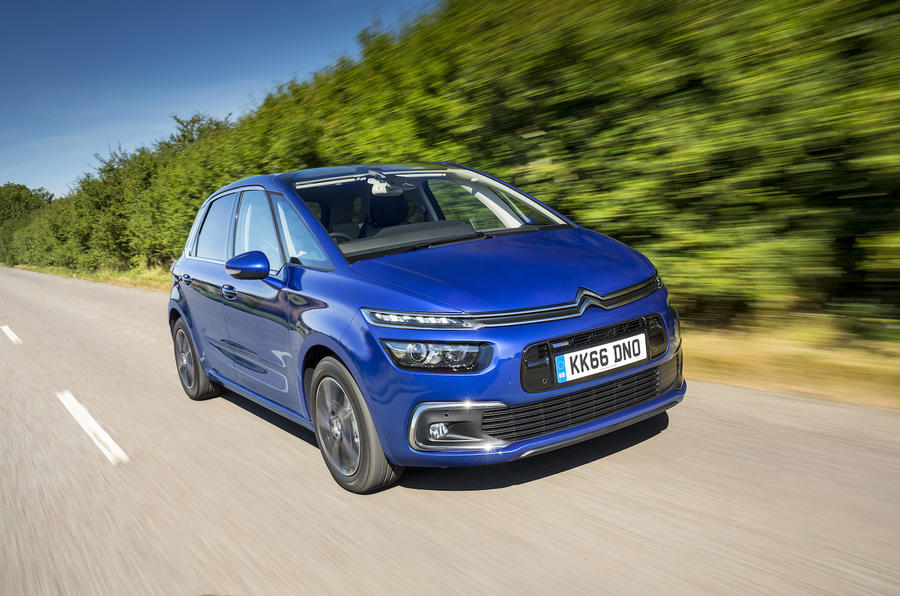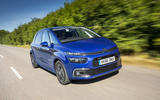What is it?
Citroën has treated its once dominant C4 Picasso to a mid-life facelift in the hope of keeping the stylish five-seater competitive in a market that is currently undergoing something of a crisis.
Only a few years ago, buyers who wanted a family car put two things above all else: affordability and practicality. However, these days, with the introduction of competitive PCP deals and the fact that consumers have become increasingly image conscious, MPVs are being consistently shunned for luxury SUVs and upmarket crossovers.
So what changes has Citroën made to the C4 Picasso to ensure that it remains competitive in this new market landscape? Well, since its launch in 2013, the Picasso’s biggest selling point – aside from its impressive ergonomics – has been its distinctly un-MPV-like aesthetics. As a result, the C4’s styling remains relatively untouched for 2016, with a wider front air intake, chrome foglight surrounds and '3D-effect' rear lights simply enhancing what was already there.
The cabin also looks suspiciously similar to last year’s model, but that is no bad thing. We’ve always been fond of the Picasso’s light and airy interior. Instead, Citroën has dedicated most of its time to perfecting its frustrating infotainment system. Apple CarPlay and MirrorLink are two major additions that should prove popular with buyers and Citroën Connect Navigation now finally offers 3D maps, touch operation and real-time updates.
What's it like?
Aside from a new automatic gearbox option on the 1.2-litre petrol Puretech, the 2016 Picasso is more or less mechanically identical to the model it replaces. As a result, the big Citroën still isn’t as engaging as the BMW 2 Series Active Tourer or Volkswagen Golf SV, but that’s not to say that the Picasso is without dynamic merit.
Granted, there’s little doubt that Citroën has aimed for supple rather than sporty here, but the Picasso’s suspension is impressively adept at coping with multiple inputs. Big compressions are soaked up with aplomb, and although the soft damper settings allow for some body float over crests, there’s never a point where the chassis feels unstable or loose.
However, it’s at lower speeds where the Picasso disappoints. Over patchy and uneven surfaces, the usually supple Citroën often feels unsettled, so regular day-to-day driving isn’t as comfortable as it could be. The smaller 16in wheels that come as standard on entry-level Touch trim certainly help to improve the ride, but they don’t completely rectify the problem.
As for engines, we suspect that the mid-range 118bhp 1.6-litre diesel will continue to be the most popular with buyers thanks to its impressive fuel economy and low running costs. However, it’s well worth considering the 1.2-litre Puretech petrol if you’re a private buyer who drives mainly in town.
That’s because one of our biggest complaints with the diesel motor is that it delivers its power in one big dollop as the turbo kicks in, so you have to change gear fairly often to keep the engine in its sweet spot. There’s no such problem with the turbocharged three-cylinder petrol engine. With maximum torque achieved at 1750rpm, the motor pulls strongly from low revs and, unlike the diesel, it keeps performing well until it reaches peak power at 5500rpm. Compared with the 1.6-litre HDi diesel engine, it feels impressively flexible and refined.

















Join the debate
Add your comment
This is another Autocar
Autocar wrote:
Are you sure about that? It certainly looks like an MPV to me.
Gearbox...
I've driven several PSA models with this box, both petrol and diesel and cant say I've noticed any difference between any of them, other than the BlueHDi180 DS5 I recently took on holiday. Went like a train, but did seem to get a bit confused on some mountain passes.
WHich gearbox is it?